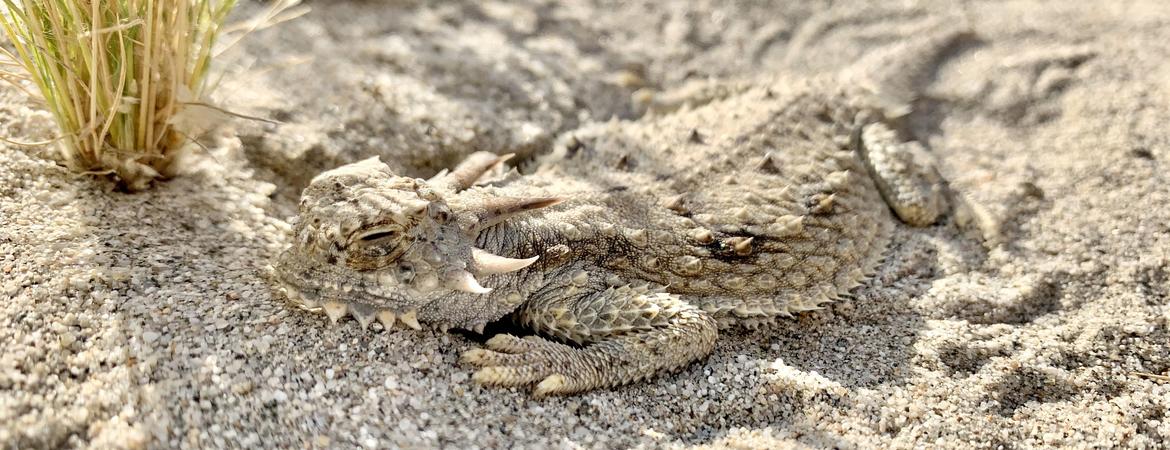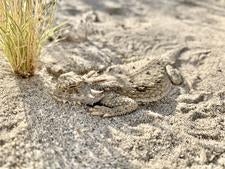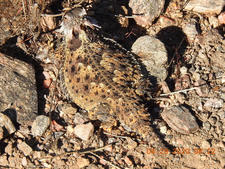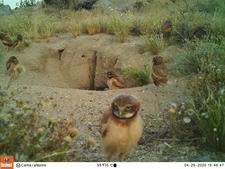
As challenging as flat-tailed horned lizards are to find, Paisley has become an amazing horned lizard spotter - seeing four of them this week. This one could be barely bothered to open his eyes for Paisley's camera. On warm nights, like those we have had this week, flat-tails will sleep out in the open on the sand, depending on their incredible cryptic patterns to avoid detection.
our inaugural 2018 class and an amazing naturalist. Among the ways to distinguish between the two species, Blainville's are "more spiny", they lack the dark midline down their back that flat-tails have, have an extra very small spine in between their two longest occipital crown spines, and have a longer double row of lateral spines. Blainville's in our desert region are found on our sky islands (mountains) between 3800-6000' elevation. In Joshua Tree National Park they are confined to the higher elevation - west end of the park. However there, another species, the desert horned lizard (I've attached an image of an obvious male for comparison) , appears to be moving into what used to be Blainville's habitat, squeezing the Blainville's into an increasingly smaller wedge of available habitat (likely due to climate change). Nearer the coast they Blainville's used to be found almost to the beach edges.


